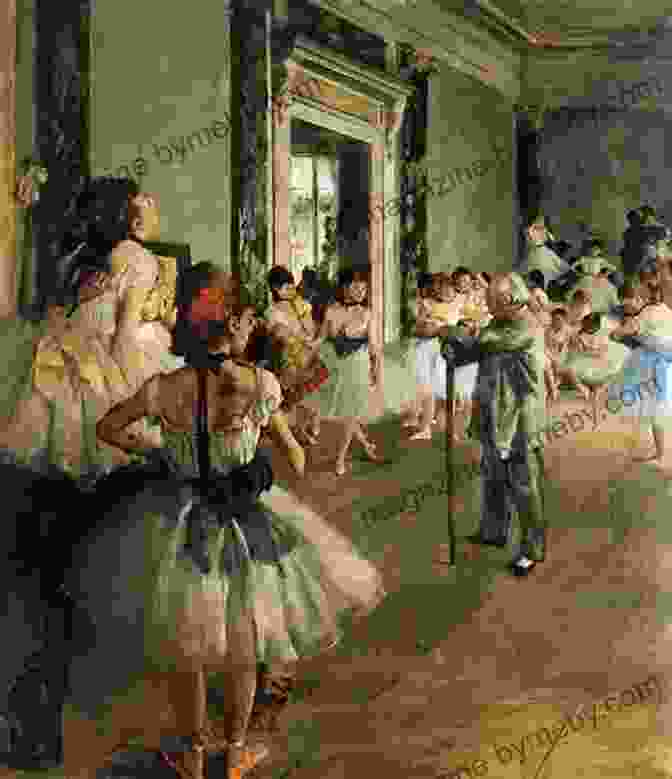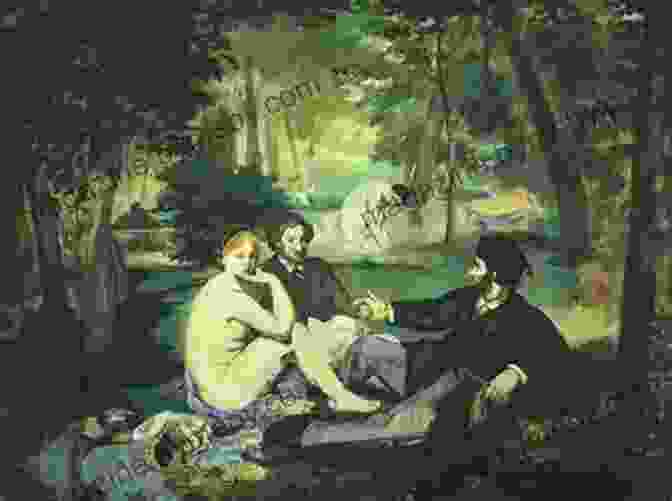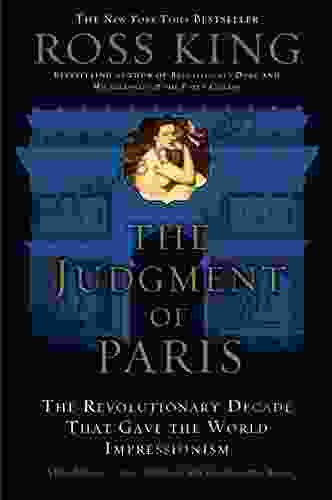The Revolutionary Decade That Gave The World Impressionism

The 1860s witnessed a remarkable transformation in the art world, as a group of young artists known as the Impressionists challenged the prevailing conventions and paved the way for a new era of artistic expression. This revolutionary decade marked the birth of Impressionism, a movement that would forever change the course of art history.
4.5 out of 5
| Language | : | English |
| File size | : | 6799 KB |
| Text-to-Speech | : | Enabled |
| Screen Reader | : | Supported |
| Enhanced typesetting | : | Enabled |
| X-Ray | : | Enabled |
| Word Wise | : | Enabled |
| Print length | : | 474 pages |
| Lending | : | Enabled |
Breaking Away from Tradition
Prior to the 1860s, academic painting was the dominant force in the art world, characterized by its emphasis on historical, religious, and mythological subjects depicted with meticulous detail. However, a growing number of artists began to question the rigid rules and artificiality of academic painting. They sought to break free from the confines of tradition and capture the fleeting moments of everyday life with greater realism and spontaneity.
Claude Monet, Camille Pissarro, Edgar Degas, Édouard Manet, Berthe Morisot, and Mary Cassatt were among the pioneering figures of Impressionism. These artists shared a common desire to paint directly from nature, capturing the effects of light and atmosphere on their surroundings. They abandoned the traditional practice of using dark, earthy colors, opting instead for a vibrant palette of bright, pure hues.

Painting the Modern World
The Impressionists were fascinated by the rapidly changing world around them. They depicted scenes of urban life, the countryside, and the leisure activities of the bourgeoisie. Their paintings celebrated the beauty of the ordinary and the transient, capturing the essence of the modern era.
One of the key elements of Impressionism was the use of loose, visible brushstrokes. This technique allowed the artists to convey a sense of movement and immediacy in their paintings. They also experimented with different ways of applying paint, such as impasto, where thick layers of paint were applied to create a textured surface.

The Salon des Refusés
In 1863, the Impressionists were refused entry to the prestigious Paris Salon, the official exhibition of the French Academy of Fine Arts. Undeterred, they organized their own exhibition, known as the Salon des Refusés (Salon of the Rejected). This event became a watershed moment in the history of Impressionism, giving the group a platform to showcase their revolutionary works to the public.
The Salon des Refusés was a critical and commercial failure, but it drew attention to the new artistic movement. Critics vehemently attacked the Impressionists' paintings, deriding them as unfinished and crude. However, a few influential supporters, such as the art critic Jules-Antoine Castagnary, recognized the significance of their work and defended them against their detractors.

Legacy of Impressionism
Despite the initial resistance, Impressionism gradually gained acceptance and became one of the most influential art movements in history. The Impressionists' innovative techniques and focus on the modern world paved the way for subsequent artistic movements, such as Post-Impressionism, Expressionism, and Fauvism.
Today, the works of the Impressionists are celebrated for their beauty, originality, and enduring appeal. They continue to inspire and captivate audiences around the world, reminding us of the transformative power of art and its ability to reflect the changing times.
4.5 out of 5
| Language | : | English |
| File size | : | 6799 KB |
| Text-to-Speech | : | Enabled |
| Screen Reader | : | Supported |
| Enhanced typesetting | : | Enabled |
| X-Ray | : | Enabled |
| Word Wise | : | Enabled |
| Print length | : | 474 pages |
| Lending | : | Enabled |
Do you want to contribute by writing guest posts on this blog?
Please contact us and send us a resume of previous articles that you have written.
 Book
Book Novel
Novel Page
Page Chapter
Chapter Text
Text Story
Story Genre
Genre Reader
Reader Library
Library Paperback
Paperback E-book
E-book Magazine
Magazine Newspaper
Newspaper Paragraph
Paragraph Sentence
Sentence Bookmark
Bookmark Shelf
Shelf Glossary
Glossary Bibliography
Bibliography Foreword
Foreword Preface
Preface Synopsis
Synopsis Annotation
Annotation Footnote
Footnote Manuscript
Manuscript Scroll
Scroll Codex
Codex Tome
Tome Bestseller
Bestseller Classics
Classics Library card
Library card Narrative
Narrative Biography
Biography Autobiography
Autobiography Memoir
Memoir Reference
Reference Encyclopedia
Encyclopedia Jon Cope
Jon Cope John Ramirez
John Ramirez John Rhea
John Rhea Peggy Caravantes
Peggy Caravantes Stu Lloyd
Stu Lloyd Judith Pearson
Judith Pearson James Atkinson
James Atkinson John Whitman
John Whitman Michael Englishman
Michael Englishman Todd Phillips
Todd Phillips Joshua James
Joshua James Emily Evans
Emily Evans Joshua Clark
Joshua Clark Mike Artell
Mike Artell Rich Cohen
Rich Cohen Philip Yarrow
Philip Yarrow Richard Barrett
Richard Barrett Peter Ross
Peter Ross Richard Rodriguez
Richard Rodriguez Theodore E Hughes
Theodore E Hughes
Light bulbAdvertise smarter! Our strategic ad space ensures maximum exposure. Reserve your spot today!

 David MitchellUnlock the Secret to Financial Success in the 21st Century: The Ultimate...
David MitchellUnlock the Secret to Financial Success in the 21st Century: The Ultimate...
 Alex ReedUnleash Your Emotional Intelligence: A Comprehensive Guide to the Handbook of...
Alex ReedUnleash Your Emotional Intelligence: A Comprehensive Guide to the Handbook of... Jamison CoxFollow ·5.4k
Jamison CoxFollow ·5.4k Cameron ReedFollow ·11.6k
Cameron ReedFollow ·11.6k Esteban CoxFollow ·4.2k
Esteban CoxFollow ·4.2k Italo CalvinoFollow ·19.9k
Italo CalvinoFollow ·19.9k Cortez ReedFollow ·5.4k
Cortez ReedFollow ·5.4k Geoffrey BlairFollow ·8.6k
Geoffrey BlairFollow ·8.6k Salman RushdieFollow ·9.5k
Salman RushdieFollow ·9.5k Nick TurnerFollow ·13.4k
Nick TurnerFollow ·13.4k

 Efrain Powell
Efrain PowellCritical Thinker's Guide to Media Bias and Political...
In a world awash with information, it has...

 Aubrey Blair
Aubrey BlairMurder Is Bad Manners: An Unforgettable English Mystery
Prepare yourself for a captivating literary...

 Luke Blair
Luke BlairDon't Settle For Safe: Embrace Adventure and Live a Life...
<p>In this inspiring and...

 W.H. Auden
W.H. AudenRoblox Codes Dragon Adventures King Legacy All Combat...
Roblox is a massively popular online game...
4.5 out of 5
| Language | : | English |
| File size | : | 6799 KB |
| Text-to-Speech | : | Enabled |
| Screen Reader | : | Supported |
| Enhanced typesetting | : | Enabled |
| X-Ray | : | Enabled |
| Word Wise | : | Enabled |
| Print length | : | 474 pages |
| Lending | : | Enabled |












